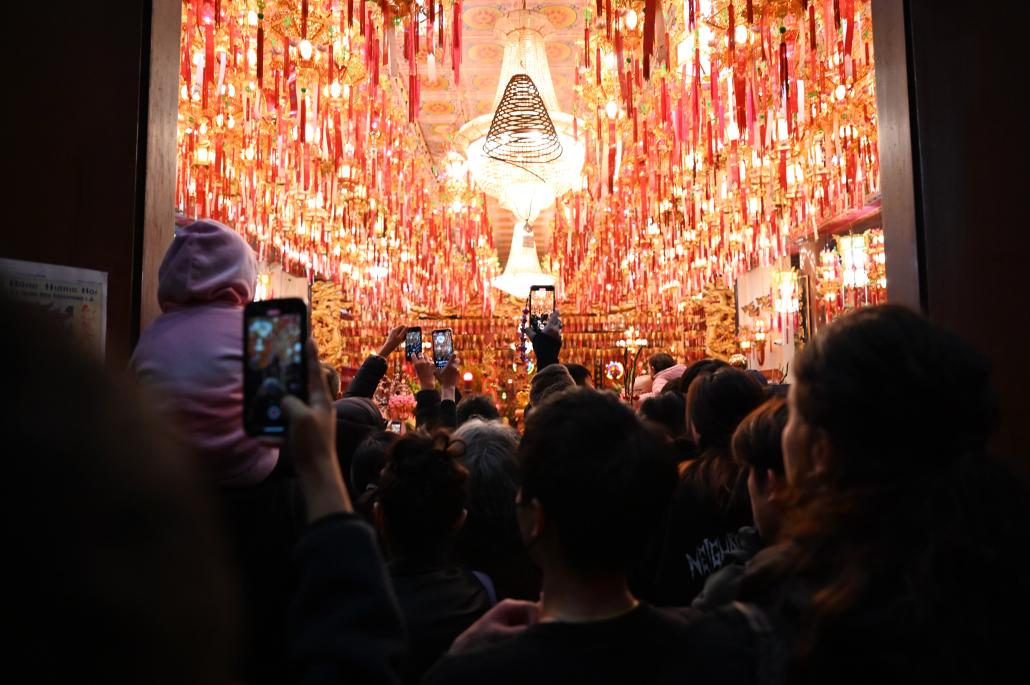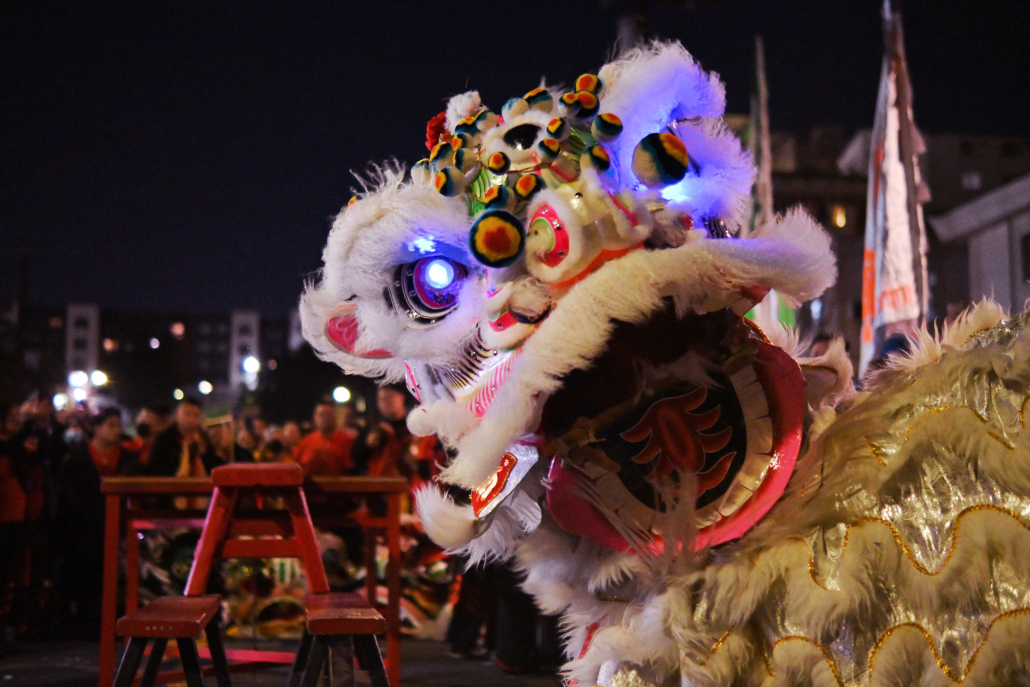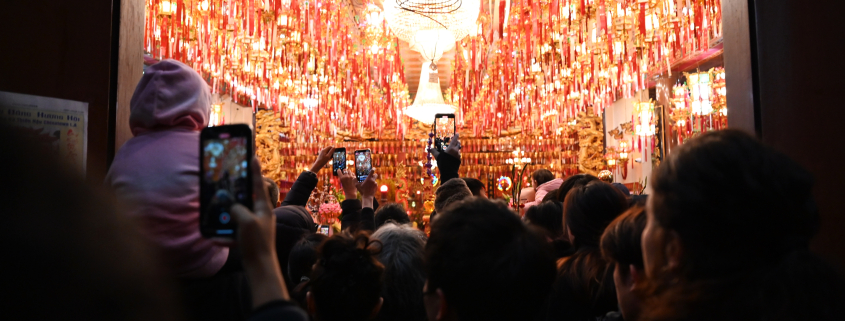APIA community welcomes the New Year

The monumental date for the 2023 Lunar New Year fell on Jan. 22.
With around 19.3% of USC’s population being members of the Asian Pacific Islander American community, there are a myriad of ways people have celebrated.
Lunar New Year is a celebration of new beginnings and the arrival of spring. As its name suggests, it is based on the cycles of the moon. The holiday begins with the first new moon of the lunar calendar and ends 15 days later, on the first full moon.
“In East Asia, people have been using a lunar calendar for thousands of years,” said Sonya Lee, chair of the Department of East Asian Languages and Cultures and professor of art history, East Asian languages and cultures, and religion. “It’s not the same as the calendar [used] in the West. It basically tracks the movement of the moon.”
Lunar New Year has been widespread in East Asia throughout history, and every culture has its own traditions when it comes to the holiday. Despite this, one of the major characterizing factors of Lunar New Year that unifies Trojans cross-culturally are the food practices during the lunar holiday.
“[My family and I] always have tteok-guk, which is like rice cake soup,” said Jihyun La, a sophomore majoring in computer science. “That’s very traditional food for the Lunar New Year.”
Lunar New Year foods also often symbolize good things to come in the future.
Dumplings are essential to Lunar New Year celebrations for Peter Chong, a sophomore majoring in quantitative biology. The shape of the dumplings resembles the traditional Chinese currency of the past, so eating them means that in the next year, the eater you will have great luck financially.
I grew up in China, so I have very few memories back then of gathering with family at my grandparents house having the New Year’s Eve dinner with everyone. It’s been so long since I’ve been able to do that with my family. What I do differently [now] is making time to be with people, whether they’re blood family or chosen family.
Carey Li, vice chair of Asian Pacific Islander Faculty and Staff Association
“Sometimes, [my family does] like a dumpling mass gathering to make dumplings and then eat them together,” Chong said. “They don’t turn out all that well all the time, but it is mostly about just eating and hanging out with family and friends.”
Some foods can carry significance through idioms and sayings.
“My mom would cook fish and we’d have to eat some of the fish, but leave some of the fish behind,” said Brady Lin, a sophomore majoring in architecture. “There’s this saying called ‘nián nián yǒu yú.’ Basically, that means you should have a surplus for every year. But one of the words sounds like fish, so, they cook a fish and then they leave a bit extra to leave a bit of money for the next year.”
For many people, financial prosperity is an important theme in Lunar New Year celebrations. Growing up surrounded by Chinese culture, Chong said hóngbāo, or a small traditional red pouch filled with money, was his favorite part of every Lunar New Year celebration. Ranging from $2 given to him by teachers as a kid to the hundreds of dollars he’s seen friends receive, hóngbāo has been an essential part of Lunar New Year for Chong.
On top of the dishes and practices that represent this time of year, people around campus said the idea of community and being with loved ones was one of the best parts of Lunar New Year.
“[I love] making it an occasion to get together with family,” said Carey Li, vice chair of Asian Pacific Islander Faculty and Staff Association. “It’s nice that Lunar New Year is an extension of that holiday season, and so you continue to have that sense of being with people that you care about for a special occasion.”
Katherine Guevarra, vice chair of the APIFSA Programming and Development Committee, said one of her favorite things about the holiday was that she lives near most of her family, allowing her to celebrate with her parents and her daughter, and to share traditions intergenerationally.

Despite the joy that comes with celebrating this cultural holiday with family members, many USC students and faculty do not have family in Los Angeles. Some said the way they observe Lunar New Year is quite different from how they used to do it back when they lived with their family.
“Normally, if I was at home, I would be making food with my family, calling up my grandparents,” La said. “But I’m at the dorms this year, so I’ll be going to a bunch of the different Lunar New Year celebrations and calling up my parents and grandparents. I might cook the traditional Lunar New Year foods.”
Some individuals said they feel homesick and long to be with their families, but have learned to find and foster community and family here at USC.
“I grew up in China, so I have very few memories back then of gathering with family at my grandparents house having the New Year’s Eve dinner with everyone,” Li said. “It’s been so long since I’ve been able to do that with my family. What I do differently [now] is just making time to be with people, whether they’re blood family or chosen family.”
The holiday spirit is shared among friends and is a valuable factor in serving as a cultural connection between members of the APIA community. Lunar New Year is widely celebrated in East Asia. China, Japan, Taiwan, Vietnam and South Korea are among some of the countries that take part in the holiday. At USC, the holiday serves to bring communities together and experience likeness among APIA students, faculty and staff.
As members of the APIFSA executive board, both Li and Guevarra have helped organize festivities for students, faculty and staff to enjoy at both the Health Sciences Campus and the University Park Campus.
“We are hosting a family friendly evening for our staff, their kids and anyone else that they want to invite,” Li said. “It’s a carnival style event where we have different activity stations. So we’ll have karaoke and lantern painting … I’m really excited that we have the funds and the approval to pull off an event like this.”
At UPC, the Lunar New Year celebration held by APIFSA will take place Feb. 1 at noon in the University Religious Center courtyard.
“Last year, we partnered with the Office of Religious and Spiritual Life and APASS to put together a Lunar New Year celebration, so we’ll be doing something similar to that this year as well,” Guevarra said. “It just gives our community a space and opportunity to acknowledge Lunar New Year and celebrate it among our students, our faculty and our staff and give people a moment to acknowledge the Asian community over at USC too.”
Lin said he appreciated the various events that have been held across USC campuses.
“[Putting on these events] brings a lot more Asian culture and representation into USC,” Lin said. “There’s the Mid-Autumn Festival and a few other East Asian holidays I know about. I think it’s definitely really good that they’re having a lot of events for that.”

